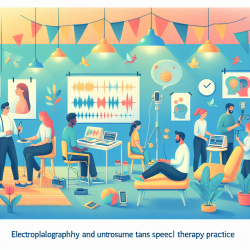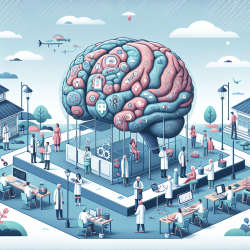Introduction
Amyotrophic lateral sclerosis (ALS) is a complex neurodegenerative disorder characterized by the degeneration of motor neurons. The rapid progression and lack of biomarkers pose significant challenges for effective treatment. Recent advancements in magnetic resonance imaging (MRI) have shown promise in detecting pathological signatures and tracking disease progression in ALS. However, the microstructural and molecular pathological substrates remain poorly understood. A recent study, "Dissecting the pathobiology of altered MRI signal in amyotrophic lateral sclerosis," provides insights into correlating MRI findings with histological data, offering a path forward for practitioners to enhance their understanding and potentially improve therapeutic outcomes.
Research Overview
The study presents a universal whole-brain sampling strategy for post mortem human brains, integrating ultra-high-field MRI with quantitative neuropathology. This methodology allows for the direct comparison of MRI signal changes with histological evaluations, enhancing the understanding of ALS's pathophysiology. The research highlights the importance of standardized sampling strategies and the use of tractography-guided sampling to accurately delineate white matter tracts of interest.
Implications for Practice
For practitioners in speech language pathology, particularly those working with children, understanding the underlying mechanisms of neurodegenerative diseases like ALS can be crucial. The integration of MRI and neuropathology as demonstrated in this study offers several potential benefits:
- Enhanced Diagnostic Accuracy: By understanding the correlation between MRI signals and underlying histopathology, practitioners can improve diagnostic accuracy, leading to better-targeted interventions.
- Improved Treatment Strategies: Insights from MRI-histology correlations can inform the development of more effective treatment strategies, potentially slowing disease progression or alleviating symptoms.
- Data-Driven Decisions: The study emphasizes the importance of data-driven decisions, a principle that can be applied across various aspects of speech language pathology to improve outcomes for children.
Encouraging Further Research
While the study provides a robust framework for understanding ALS, it also opens avenues for further research. Practitioners are encouraged to explore the following areas:
- Longitudinal Studies: Conducting longitudinal studies to track disease progression and response to interventions using MRI and histological data.
- Cross-Disciplinary Research: Collaborating with neurologists, radiologists, and other specialists to develop comprehensive treatment plans.
- Application to Other Disorders: Exploring the applicability of the MRI-histology correlation methodology to other neurodegenerative disorders, potentially broadening the impact of this research.
Conclusion
The integration of MRI and neuropathology offers a promising avenue for enhancing the understanding and treatment of ALS. For practitioners in speech language pathology, embracing data-driven approaches and interdisciplinary collaboration can lead to improved outcomes for children affected by neurodegenerative disorders. As we continue to unravel the complexities of ALS, the insights gained from studies like this one will be invaluable in shaping future research and practice.
To read the original research paper, please follow this link: Dissecting the pathobiology of altered MRI signal in amyotrophic lateral sclerosis: A post mortem whole brain sampling strategy for the integration of ultra-high-field MRI and quantitative neuropathology.










